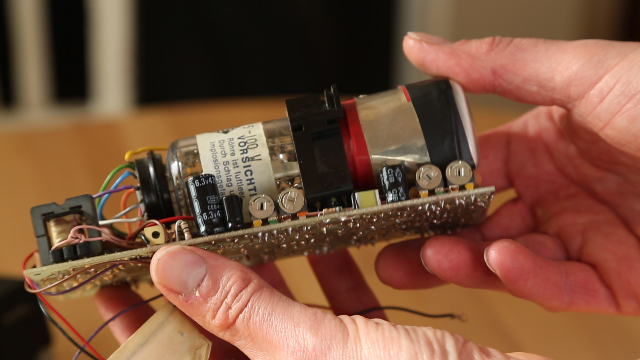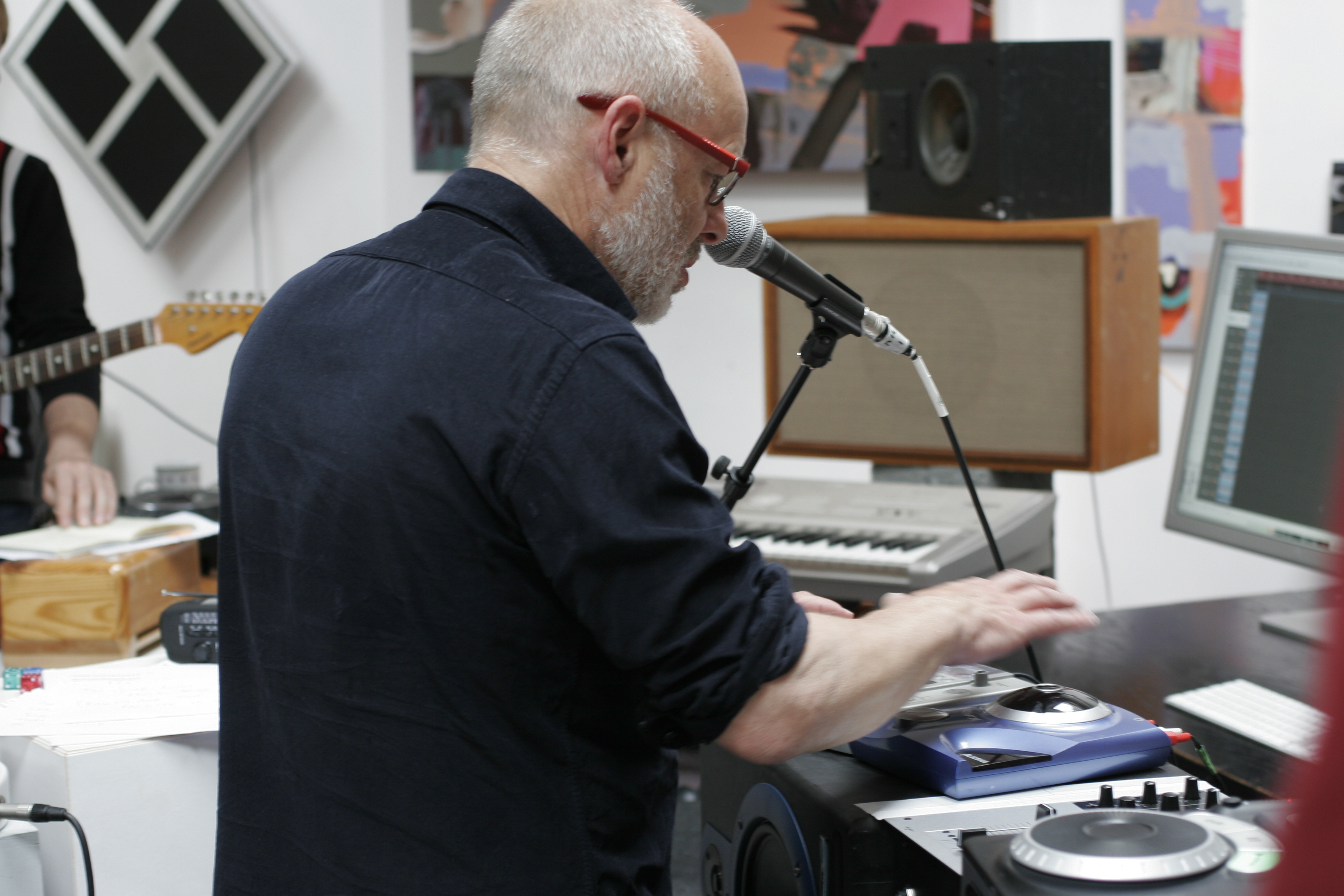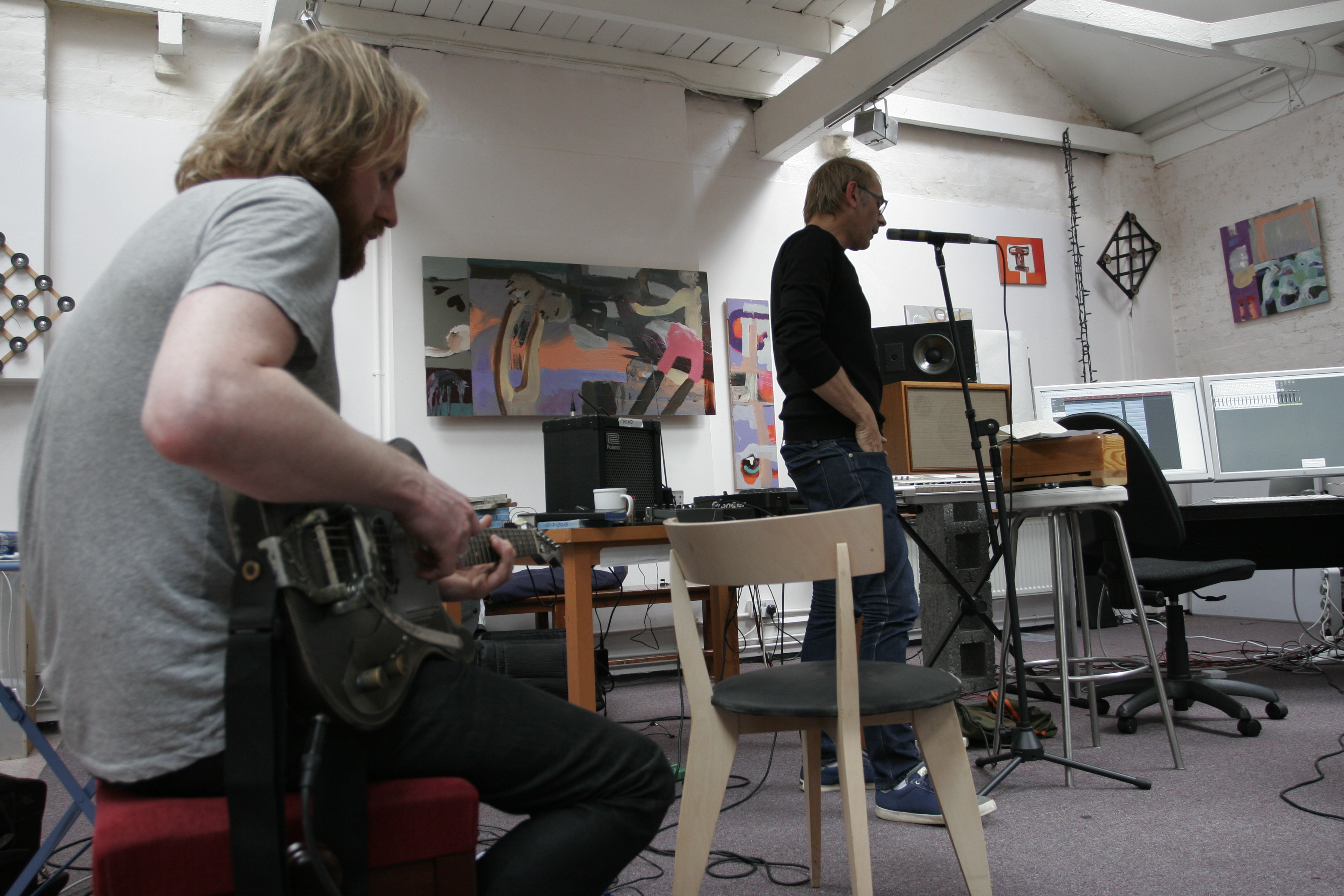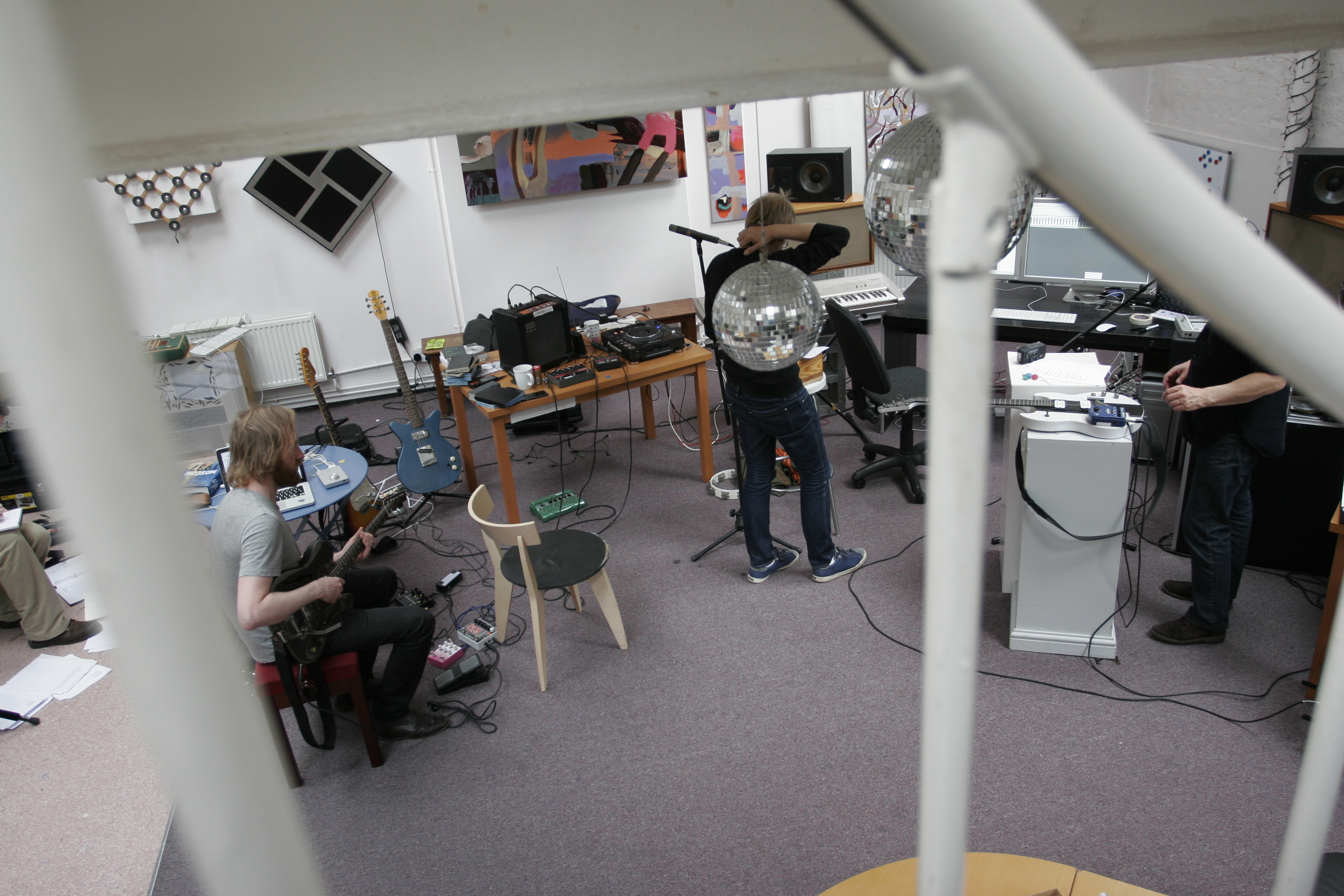In Part 1 Richard explained how he became a film director and detailed the production of his first film, The Gigolos. In Part 2 he discusses Punk Cinema’s second film, Cuckoo, and talks more on his techniques and views on filmmaking.
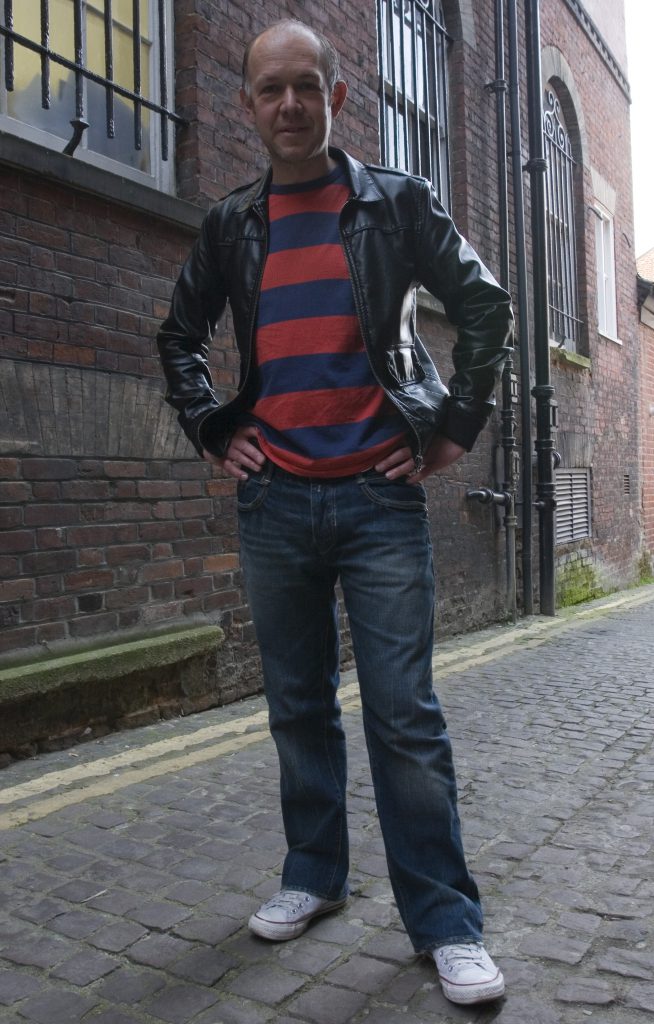
Richard Bracewell in April 2011. Photographed by TF
Making Cuckoo
The Gigolos may not have found its way into mainstream cinemas, but it was warmly received by critics and proved that Richard could successfully direct and produce a feature length film. It also paved the way for Punk Cinema to make Cuckoo; a much bigger budget project involving many more cast and crew. On the face of it, more money and a greater number of professionals on set sounds like a good thing, but Richard found that they introduced a new, and slightly unforeseen, set of problems.
Cuckoo is a very different film,” says Richard. “The method we used to shoot The Gigolos was designed to serve the story. Sasha and Trevor had not done a film before so it would have killed it to have had a big crew, stopping and starting every 30 seconds. So we evolved a way of working that was much more DIY – home made – hence Punk Cinema.
“But I hadn’t thought carefully enough about the elements of The Gigolos that really made the film work and, as a result, had some quite difficult transitional times during the making of Cuckoo, where I had to claw a lot of that back. Cuckoo had established names in it – Tamsin Greg, Laura Fraser and Richard E. Grant – and there were loads of crew members on set. They were all doing a great job, but I had to try and recreate the mentality of a much smaller improvised film whist working with those bigger names, much more money and a bigger set.
“The budget was just over a million pounds so it was very expensive compared to The Gigolos. The problem is that because it is so expensive you have to account for every minute on set. You have to make sure that in a day you get seven-and-a-half minutes, or 16 setups – or 25 setups if you are shooting TV drama, so it is extremely regimented. Call time was at eight AM and everybody would be there ready to start. There was a break at one PM, an hour for lunch and everyone would break at five. All the actors would be in makeup at half-six getting ready to go.
“The crew move fast because they know that their jobs depend on getting the things done quickly and efficiently. That’s not quite what I wanted. I wanted a set where the actors and the story came first, so gradually, in the course of shooting Cuckoo over about five weeks, I had to strip all that away.”
Capturing the Truth
One of Richard’s principle aims when making a film is getting some sort of truth from the performances of his actors. In his view, it is this truth which enables the audience to sympathise with the characters on screen. Much of Richard’s work – briefing the set designers, crew and actors before filming – is done to ensure the conditions are right for capturing the best performance when the key moment arrives.
“The set and the filming should all be about the actors. They know the lines and hit the marks, but you have to create the conditions for them to deliver a performance that really connects with the audience. That opportunity to get the best from the actors was all I needed but, unfortunately, what I had in addition was a very rigid, big TV drama mentality where there were lots of crew doing their job quickly and efficiently.
“It started off with them saying ‘Why are we trying this? We’re supposed to be on a deadline. This is the way we do it.’ I was working with people who had hundreds or thousands of hours more experience than I had, but I’d made a film and it had worked and got released, so I knew what I wanted.
“So it’s really hard. I can imagine it must be 100 times harder if you are Christopher Nolan directing Batman Begins; the studio is throwing a hundred million dollars at your production and you are losing sight of why they hired you in the first place.
“It’s tricky because it is so collaborative. You have so many elements to a film and so many people on set all wanting to get on with their job.”
Despite the difficulties on set, Richard’s pre-production work ensured that the set and way the film was going to look were very much as he planned.
“Mark Partridge was the director of photography on Cuckoo and he lit and shot it beautiful. I had already done all the work with Mark in advance and we’d talked about how the film should look, so I didn’t need to talk to him on set. Cuckoo was all about the form and the way it looks and, in that sense, it couldn’t be further from The Gigolos, because everything was documentary about The Gigolos.
“I was talking to Simon Scullion, the set designer, for a couple of years before going into production, so by the time it came to build the sets I didn’t need to have any more conversations with him. I can’t remember how much of the budget went on the sets but it was a lot. Some scenes are exteriors but almost 80 percent of the film is shot on these two sets. One is a science lab, the other is the flat where the main character lives and becomes trapped through her own imagination, or not, as the case may be.
“I didn’t really have a storyboard for Cuckoo but it was scripted and I knew the script back to front. I cast the actors because they got what we were trying to do. They responded to what was in the script so we were all going in the same direction and didn’t need to have any conversations on set.
“I cast people who had seen the same kind of thing in the script that I intended. So we were all trying to make the same film and deliver the same thing. So being on set is just giving them the opportunity to deliver that.
“More often than not, the actors knew if they had got it right or if they could take it further. Almost the ideal set is where no words need to be spoken and the actors themselves know if they haven’t got it that time. Sasha was particularly good at that and Laura was pretty good in Cuckoo.
“So casting is about finding someone who intimately understands what it is you are trying to achieve, so that you can let them get on with delivering their bit while you get on with your job.”
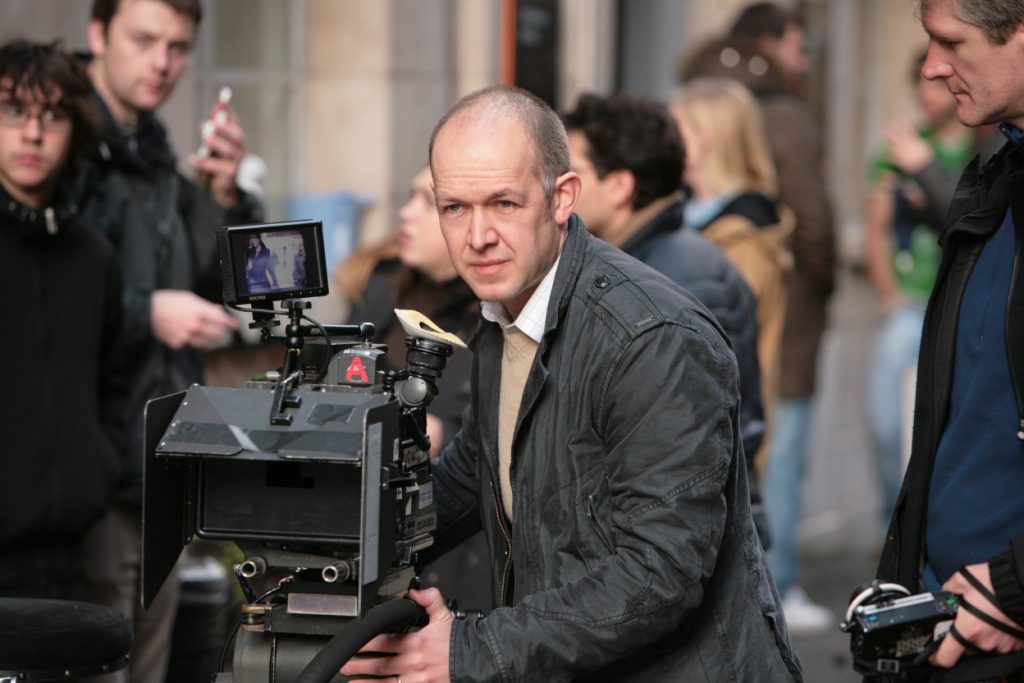
Richard working on Cuckoo
Casting Decisions
For The Gigolos, the actors were required to improvise their scenes, raising the possibility of one or more of them coming up with something less than convincing. When asked if he cast actors whose personalities were close to the characters so that they could almost present a version of themselves, Richard is adamant that it was not a policy.
“There is a lot of the real Trevor and Sasha in their characters, but they are really not like that. It is just they have that facility to convince you that what you are watching is absolutely real. We’ve had lots of screenings where people have taken against Sasha because they think he is unkind in the way he treats Trevor, and they have loved Trevor because he is a really warm everyman, but it’s just a performance.
“Richard E. Grant plays this sociopathic professor in Cuckoo which isn’t Richard E. Grant at all. So I don’t think I have a hard and fast rule about casting; it’s just whether the actors get the story.
“The improvisation was all about working with the actors to make sure they had experiences that they could draw upon. I think the key was that they were real experiences. They were characters or people that the actors knew from their past. In the case of the four women clients in The Gigolos, the characters that they were all based on were women that the actresses knew from other walks of life and were people they had studied.
“When we did Cuckoo I spent one afternoon of rehearsals with Laura and Antonio, who played sisters in the film. We didn’t really talk about the characters but went out for tea, and I left them to spend the rest of the evening talking about the film. So what I was trying to do was give them a real memory of shared experience which they could then draw on when playing sisters. That’s quite a big part of what I do.
“Having said that, Richard E. Grant was quite different; he responded to the lines and dialogue, so his character was almost built in front of us. He has much more of a Peter Sellers approach. Sellers would find a character by putting on a hat or adopting a particular voice. That’s very different from the Dustin Hoffman approach, which is all about drawing upon real experiences he has had and projecting something that comes from within.
“So what I’m saying is actors have different approaches and I think it is about creating the conditions on set to allow the actor to do the thing that they do well.”
Musical Interludes
One very obvious reoccurring device used in Richard’s work is the musical interlude during which no dialogue occurs, but the story makes progress. For example, a well-know film which uses the technique prominently is Play Misty For Me, which plays the whole of Roberta Flack’s version of ‘The First Time Ever I Saw Your Face’ as a sound track while a montage of scenes establish the depth of the relationship between Clint Eastwood’s lead character and his girlfriend, over the course of a day.
To contrast with his film’s musical sections, Richard prefers to use a minimal score throughout the rest of the film. He explains the thinking behind the use of sound with visuals.
“An underscore is where you have music under dialogue, and Cuckoo is very similar to The Gigolos in that there is very little underscoring. I think I have watched too many Hitchcock films to do it any other way. Hitchcock films, generally, don’t have the melodrama of a lot of studio pictures that were being made at the same time.
“He’s a great montage director. In his films a dialogue scene will play, a point will be made, a character will be introduced or disappear, and the plot will move on. Then you have a montage scene where there is score and action. While that’s going on there is very little dialogue but the story moves on. Cuckoo is very similar: very little underscore, the scene happens and then the film moves on. You have montage and music.
“The montage scenes allow the film to cover some ground and for time to pass. The same happens in The Godfather and Apocalypse Now. In all the big confrontations there’s not very much underscore, but then you have huge dramatic, operatic scenes, where the images tell the story to music and it is often music that has no connection in time or space to the action. So I think it’s probably just unconscious. They are the movies that I love so that’s the approach I have when I make my own films.”
“I remember my treat on my birthday when I was about 12, was being allowed to stay up and watch a Sergio Leone film which was on BBC2 really late. That was what I wanted. I think it was A Fist Full of Dollars, with very little dialogue but huge, long scored passages.”
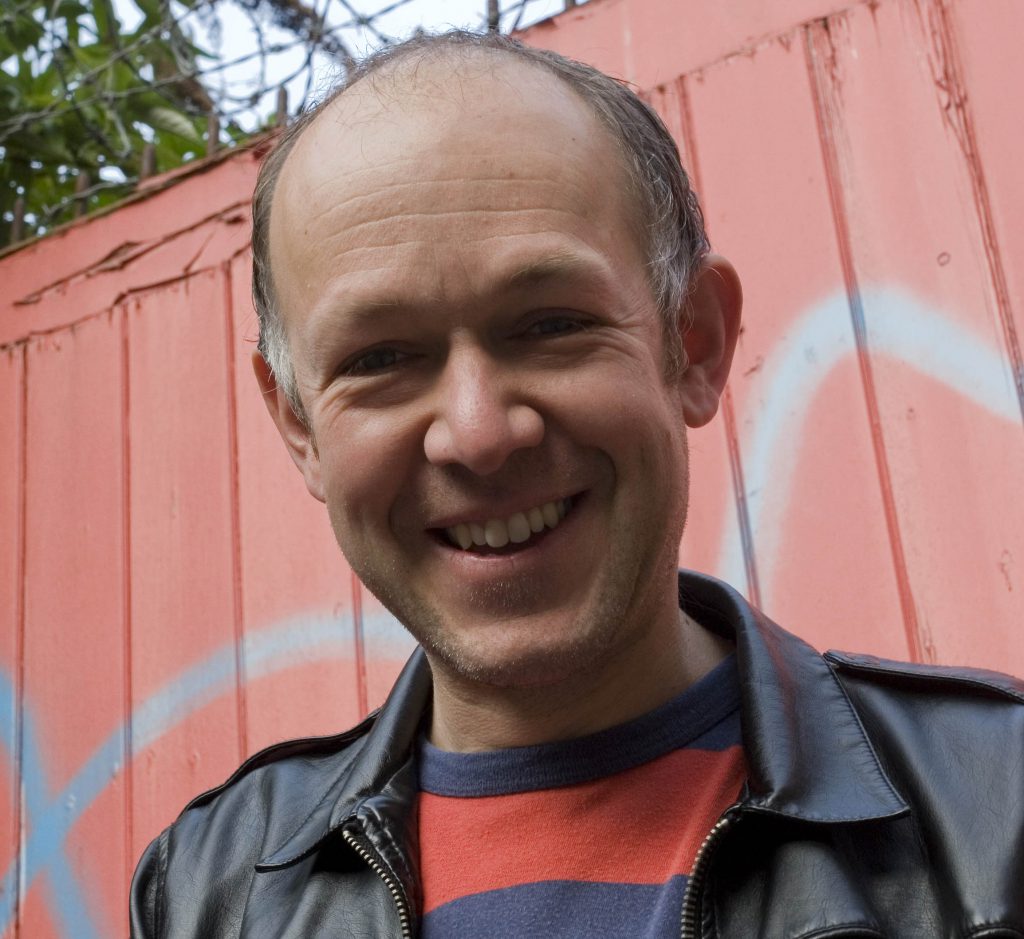
Richard Bracewell. Photo by TF April 2011
Identity of a Filmmaker
Quite apart from being filmed in London and using a British cast, Richard’s film, The Gigolos, has something quintessentially British about it. The subtle humour and documentary style is reminiscent of The Office, while the slightly understated story-line feels a little like Gregory’s Girl or Withnail And I. Nevertheless, Richard does not see himself as a part of any British film-making movement.
“I am making English films because they are all very personal and we are intimately involved in making them. So I think they are inevitably about familiar places and experiences. Certainly the things we are working on at the moment are all very recognisably English.
“I didn’t think about it at any point during The Gigolos; it was just shot in London because that’s the story. We didn’t try to make anything particularly English and English films are not the ones I watch over and above any others. I like a lot of British filmmakers but I also like a lot of French, Italian and American film directors.
“The question about nationality in film is so multifarious. The King’s Speech, for example: is that a film about being English? Geoffrey Rush helped produce it, a lot of it was financed out of Australia and it was filmed all over the place. So is it a British film? I don’t know. I think it is very difficult to say in the UK because so much American cinema is shot and created here by British writers, directors, producers, performers. I’m not sure there is such a thing as British cinema in the same way as there is Spanish or French cinema, where there is a subsidy and someone has tried to define what it is and decide how they are going to support it.
“In order to do that we’ve got to name it and identify it, but I don’t think there is such a thing. The tax breaks in the UK are set up in such a way as to help indigenous filmmakers, but a studio coming into the UK and shooting Batman Begins can take advantage of the tax breaks as well. The cast and crew may also be seventy or eighty percent British, but does that make it British? I think it is impossible to say if there is such a thing.”
Although Richard cannot deny that his work in television gave him invaluable experience of working on a budget, to deadlines and in a variety of situations, he does not believe that the experience affected his style of filmmaking.
“When I was let lose making documentaries or entertainment shows for TV, in my mind I was making a movie. I used to make them for Channel 5 and that was my favourite job. Anything for channel 5 was great because although you had a really small budget, nobody interfered with what you were doing.
“The production company would provide the money and the brief and you’d go off with one assistant and make this documentary. I worked with this guy who has since become a successful commercial’s director, so he and I were working with barely any money, but treating it like a feature film.
“Channel 5 commissioned us to make a show called Bizarre Ways To Die for which we did recreations of six really weird stories from the news. We went the whole hog with just a tiny camera and some lights, and in our minds we were filming Ben-Hur! So we delivered this thing to Channel 5 and they were saying ‘Oh my God, how much did we pay for this?’ They couldn’t believe what we’d done.”
For Richard, film directing might just be the perfect job, for it brings together his interests in music, writing and performance. It may have been a long time coming, but it seems as though being a filmmaker was quite possibly his destiny all along.
“I am a frustrated writer, musician and composer, but being a filmmaker is like doing a little bit of all those jobs,” he confirms. “You can do the music by working very closely with a composer and feel quite pleased with yourself for briefing them in a fairly musical, literate sort of a way. A lot of directors like Mike Figgis and Clint Eastwood, for example, write scores for their own films.
“The same is true with all the other disciplines. I like photography but I’m not good enough to be a professional photographer. But I am proficient enough to be able to work closely with a cinematographer or director of photography and tell them what I want.
“I also wanted to write but wasn’t proficient enough to be a journalist. Screenwriters are not nearly as proficient as journalists; they don’t tend to work on such tight deadlines and can hide behind the notion of writing when the story finds them.
“Fortunately the job that I can do is direct, which is a job made up of all these elements. As a director, you lace all these lovely elements together, and hopefully, if you are any good, make something which is just a little bit better than the sum of its parts. That sum can be something really special.”
The Future of Punk Cinema
Although Punk Cinema has only released two feature films to date, the team have been hard at work on several more which will soon see the light of day. Of course, as Richard was quoted as saying at the beginning, it takes years to bring a film idea to market, so the projects are in various stages of development.
“At the moment we are working on a script for a fantastic redemptive love story. The writer and I have talked about working together for a long time but he suddenly told us this idea and said he wanted to start writing it.
It’s not going to be a big film. It’s going to be much more on The Gigolos size. But simultaneously, we are raising the finance for what could be as big as a 10 to 15 million pound movie. That’s The King’s Speech size. I think that cost around 10 million pounds, which is very cheap considering how well it has done. In the context of film production that is not actually a large figure. Our film is a caper comedy about a Russian billionaire who goes on the run, and is something we’ve been thinking about for a while. So we are working on two very dissimilar projects but both have really interesting stories. The motivation is working with writers who have interesting stories to tell regardless of the size of the film, or even if it is a film at all.
“There’s something I worked on recently that started off as a film idea. We shot some material for it, but it is possible that it won’t end up being a film or a TV show. It’s something completely different but still has the potential to be a really great story. It may be something that we can publish in five-minute chunks on a YouTube channel.
“I don’t think the medium really matters, it’s still the idea that counts. But, personally, I love watching films and want to make films because of my feeling for them. What I’m interested in are stories that I can tell as 90 minute films and then watch in a cinema. It’s always about the story and if the story is great then I am motivated to tell it, as was the case with The Gigolos and Cuckoo. Cuckoo was made in very difficult financial circumstances just as the whole financial world was caving in on itself. We sweat blood to make it happen and are very involved and committed to what we do.” TF
Part 1 of Richard’s interview can be found here: Part 1

